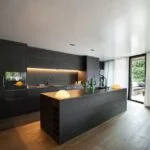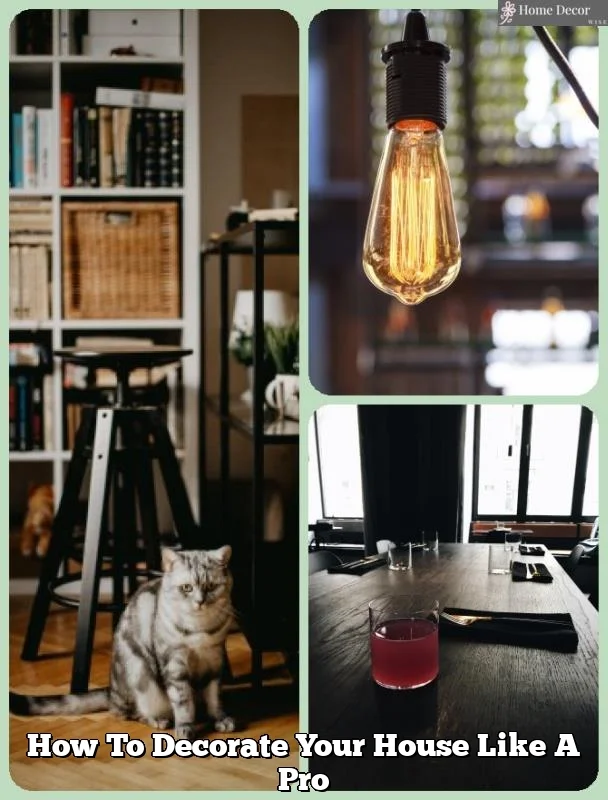Are you looking for a fun and creative way to add a personal touch to your home decor or gifts? Learn how to decorate a box at home with our complete guide. Decorating boxes can serve various purposes, from creating custom storage solutions to adding a unique touch to gift-giving. Whether you’re an experienced crafter or just starting out, this article will provide you with the tips and techniques needed to decorate boxes at home.
Decorating boxes at home is not only a great way to express your creativity but also provides an opportunity to repurpose and personalize everyday items. With just a few supplies and some imagination, you can transform a plain box into a beautiful and functional piece that reflects your personality or the recipient’s style. From jewelry boxes to storage containers, the possibilities are endless when it comes to decorating boxes.
In this article, we will discuss everything you need to know about decorating boxes at home, including the materials needed, choosing the right box for your project, preparing the box for decoration, different decorating techniques, creative DIY ideas for various types of boxes, personalizing touches, and final finishing tips. So get ready to unleash your creativity and learn how to create unique and personalized decorative boxes at home.
Materials Needed
When it comes to decorating a box at home, having the right materials is essential to ensure a successful and visually pleasing outcome. There are several items that you will need to have on hand before you begin your box decorating project. First and foremost, you will need to choose the perfect box for your project. This could be a plain cardboard box, a wooden jewelry box, or even a decorative gift box.
Once you have chosen the perfect box, you will need to gather various supplies such as paints, markers, fabric, ribbons, and other decorative items. The type of materials you choose will depend on the style and theme you want to achieve with your decorated box.
For example, if you are going for a vintage aesthetic, you may want to use antique-looking fabrics and lace trims. On the other hand, if you want a modern and colorful look, then acrylic paints and vibrant ribbons might be more suitable for your project.
To properly decorate a box at home, it’s important to prepare all the necessary materials in advance so that once you start the project everything is readily available. This preparation will also help prevent any unnecessary interruptions during the creative process of decorating your chosen box.
Gathering all these materials will set up for success in creating beautiful keepsake boxes or thoughtful gifts for friends and family members alike while providing an enjoyable experience in expressing one’s creativity through crafting using different materials.
Choosing the Right Box
When it comes to decorating a box at home, one of the first steps is choosing the right box to decorate. The perfect box will be a blank canvas for your creativity and will suit the purpose for which it will be used. Whether you want to create a decorative jewelry box, a personalized gift box, or a functional storage box, selecting the right box is crucial.
First and foremost, consider the size of the box. If you have a specific purpose in mind for the decorated box, such as storing trinkets or gifts, make sure that the dimensions are suitable for your needs. Additionally, think about where the finished box will be displayed or stored. For example, if you plan to showcase it on a shelf or dresser, ensure that it fits well within that space.
Next, take into account the shape of the box. Do you prefer a classic square or rectangular shape? Or perhaps you want something more unique like a heart-shaped box? The possibilities are endless, so choose a shape that speaks to your personal style and complements the items it will hold.
Lastly, consider the purpose of the box. Will it serve as packaging for a special gift? In that case, choose one with an elegant design that can be easily adorned with ribbons and other decorative elements. If you’re creating a storage box for everyday items, opt for something durable and practical that can withstand regular use.
By following these tips and considering size, shape, and purpose when choosing a box to decorate at home, you can ensure that your project turns out exactly as you envision it. Keep in mind that finding the right box is just the beginning of your creative journey in decorating.
Preparing the Box
When it comes to decorating a box at home, it is crucial to ensure that the box is properly prepared before any decorative elements are added. Preparing the box not only ensures a smooth and clean surface for decoration but also helps the decorative elements to adhere properly for a long-lasting finish. This section will provide step-by-step instructions on how to prepare the box for decoration, including cleaning, sanding, and priming if necessary.
Cleaning the Box
Before starting the decoration process, it is important to thoroughly clean the box to remove any dirt, dust, or residue that may prevent paint or other decorative materials from adhering properly. Use a damp cloth or sponge with mild soap and water to gently clean the surface of the box. For wooden boxes, take care not to oversaturate the wood with water as this can cause warping. Allow the box to dry completely before proceeding with the next steps.
Sanding the Surface
Once the box is clean and dry, it may be necessary to lightly sand the surface to create a smooth and even texture for decorating. Use fine-grit sandpaper to gently sand away any rough spots or imperfections on the surface of the box. This step is particularly important for wooden boxes or boxes with glossy finishes, as it allows better adhesion for paint and other decorative materials.
Priming if Necessary
In some cases, especially when working with porous materials such as unfinished wood or cardboard, it may be beneficial to apply a coat of primer before adding decorative elements. Primer helps create a uniform base for paint and prevents colors from bleeding through.
Choose a primer that is suitable for both your chosen decorative medium and the material of the box itself. Apply an even layer of primer following manufacturer’s instructions and allow it to dry completely before moving on to decorating.
By following these step-by-step instructions for preparing a box for decoration at home, you can ensure that your chosen decorative elements adhere properly and achieve a professional-looking finish. Taking the time to clean, sand, and prime if necessary will ultimately enhance the overall result of your decorated box while also increasing its longevity.
Decorating Techniques
Decoupage
Decoupage is a popular and relatively simple technique for decorating a box at home. To get started, you will need a box, decorative paper, scissors, Mod Podge or white glue, a foam brush, and a sealer. Begin by cutting the decorative paper to fit the sides of the box and apply a thin layer of Mod Podge or white glue to the back of the paper.
Smooth the paper onto the box and then apply another coat of Mod Podge or white glue over the top. Repeat this process for each side of the box and allow it to dry before adding a final coat of sealer for protection.
Stenciling
Stenciling is another great way to add some flair to your box. All you need are stencils, acrylic paint, stencil brushes, painter’s tape, and a sponge or foam pouncer. First, secure your stencil in place with painter’s tape and use a small amount of paint on the brush or pouncer to fill in the cut-out areas of the stencil.
Be sure to apply light pressure so that paint doesn’t seep under the edges of the stencil. Once you have filled in all areas of the design, carefully remove the stencil and allow it to dry before continuing onto other sides if desired.
Embellishing With Fabric or Ribbon
For those who enjoy working with textiles, fabric or ribbon embellishments can add an extra touch to your decorated box. You will need your chosen fabric or ribbon, fabric glue or hot glue gun with glue sticks, scissors, and embellishments such as buttons or beads if desired.
Cut your fabric or ribbon to fit around your box and use fabric glue or hot glue to adhere it in place. You can also create bows with ribbons or add decorative accents with buttons or beads using your preferred adhesive method.
These techniques are just some ideas on how to decorate a box at home but feel free to experiment with different materials and methods based on personal preferences and creativity.
DIY Box Ideas
Decorating a box at home can be a fun and creative way to personalize a special gift or add a unique touch to your home decor. Whether you’re decorating a jewelry box, gift box, or storage box, there are endless possibilities for expressing your creativity. Here are some DIY box ideas to inspire you in your decorating endeavors:
- Decoupage: This technique involves decorating a box with cut-out images or decorative paper using Mod Podge or white glue. You can create stunning designs by layering different papers and adding embellishments like glitter or beads.
- Embellished Gift Boxes: For gift boxes, consider adding extra embellishments such as ribbons, bows, or dried flowers to give them a personalized touch. You can also use paint pens or markers to write special messages or draw unique designs on the outside of the box.
- Fabric-Covered Storage Boxes: If you’re looking to spruce up plain storage boxes, consider covering them with fabric for an instant upgrade. Choose a fabric that complements your home decor and use adhesive or fabric glue to secure it to the box. Add decorative trim for an extra pop of color and texture.
These DIY box ideas are just the beginning of what you can do to decorate a box at home. With some imagination and creativity, you can transform any ordinary box into a one-of-a-kind piece that reflects your personal style and adds beauty to your surroundings.
Remember, the key is to have fun and let your creativity flow when decorating a box at home. Whether it’s for practical storage purposes or as part of a thoughtful gift, the process of transforming an ordinary box into something extraordinary can be immensely rewarding. So gather your materials and get ready to unleash your inner artist.
Personalizing the Box
Personalizing a decorated box can add an extra special touch and make it truly unique. There are many ways to personalize a box, and here are some suggestions for adding those personal touches:
Monograms
Adding a monogram to a decorated box is a great way to personalize it. You can use adhesive letters, stencils, or even hand-painting to create the monogram. Choose the recipient’s initials or your own to make the box feel more personal.
Photographs
Incorporating photographs into the design of the box is another wonderful way to personalize it. You can decoupage photos onto the surface of the box, use them as part of a collage, or even frame them with decorative borders. This approach works particularly well for gift boxes or memory boxes.
Special Messages
Including special messages on a decorated box can make it even more meaningful. This could be a heartfelt quote, a meaningful date, or simply words that hold significance for the recipient. You can use paint markers, calligraphy pens, or adhesive letters to add these messages to the box.
By adding these personal touches such as monograms, photographs, or special messages to your decorated box at home you can ensure that it is not only visually pleasing but also holds sentimental value for you or whoever you give it to.
Finishing Touches
In conclusion, decorating a box at home can be a fun and creative way to add a personal touch to your storage solutions, gifts, or keepsakes. By following the steps outlined in this article, you can easily transform a plain box into a one-of-a-kind piece that reflects your unique style and personality. Whether you choose to use paint, fabric, ribbons, or other decorative items, the possibilities for decorating a box are endless.
After completing the decoration process, it’s important to add those final finishes that will truly make your decorated box stand out. Sealing the box with varnish not only adds a protective layer but also gives it a professional and polished look. Additionally, adding a decorative lining can further enhance the overall appearance of the box and provide added protection for its contents.
No matter what type of box you choose to decorate, whether it’s a jewelry box, gift box, or storage box, adding these finishing touches will elevate the final product and ensure that your creation is both beautiful and functional. So gather your materials and get started on decorating your own unique boxes at home. With some creativity and imagination, you can turn ordinary boxes into extraordinary works of art that are sure to impress.
Frequently Asked Questions
How Do You Decorate a Blank Box?
Decorating a blank box can be a fun and creative process. You can use a variety of materials such as paint, markers, stickers, or decoupage to add some color and design to the box. You could also consider adding embellishments like ribbons, buttons, or glitter to give it some extra flair.
How Do You Decorate a Cardboard Box for a Gift?
When decorating a cardboard box for a gift, you can start by wrapping it in colorful wrapping paper or adhesive paper. After that, you can add ribbons, bows, or even fabric flowers to make it look more festive and attractive. Personalizing it with the recipient’s name or using themed stickers also adds a thoughtful touch.
How Do You Embellish a Wooden Box?
Embellishing a wooden box can involve using techniques such as staining or painting to enhance its natural beauty. You could also consider adding decorative hardware like handles or hinges to give it a more polished look. Additionally, using wood burning tools to create designs or patterns on the surface can add an intricate touch to the wooden box.

I’m thrilled to be your companion on this exciting journey through the world of home decor and design. With a passion for turning houses into homes and a keen eye for the finer details, I’m here to help you transform your living spaces into beautiful, functional, and meaningful havens.





